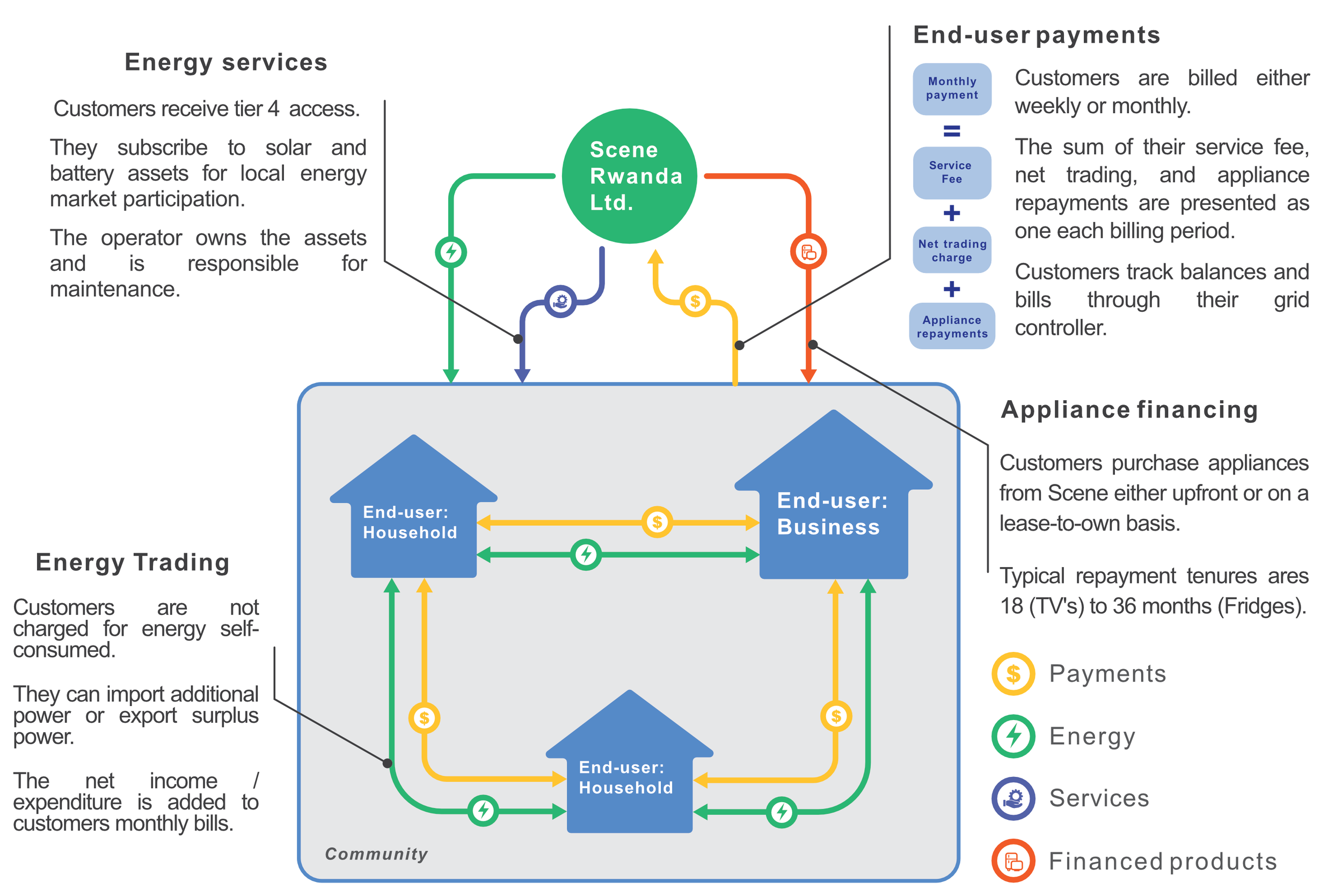Hundreds of millions of people worldwide have no electricity whilst many more receive inadequate power. Solar-home systems and traditional minigrids are seen as the key solutions for rural energy access where the national grid cannot reach - but there remains an access gap between these solutions. Solar-home systems cannot power rural industrialisation and traditional minigrids are expensive and often not viable in the hardest to reach locations. In the attempt to achieve SDG 7 - access to affordable, reliable, sustainable and modern energy for all - there are consumer segments at risk of being further left behind.
Scene has designed a new type of grid - an Evolving Grid - for energy companies like minigrid developers and solar-home system providers to address this access gap. From the bottom-up, Evolving Grids interconnect distributed renewable energy assets to form community networks of producers and consumers. Internet of Things (IoT) and automation technologies facilitate energy and financial transactions between buildings, new connections and loads can be added when needed, and grids can grow organically in step with wider community development.
With solar and batteries dispersed at grid edges, and by optimising power flows around the network, an Evolving Grid reduces the cost of electricity transmission infrastructure. By enabling local energy markets of peer-to-peer energy traders, developers can move away from revenue models based on variable per-unit energy consumption toward consistent energy-as-a-service fees. For solar-home system providers struggling with customer retention and the prospect of millions of stranded products after customers complete credit payments, an Evolving Grid offers longer, better quality relationships and easier appliance upselling.
Backed by Innovate UK and supported by a consortium of leading European and Rwandan businesses - Libre Solar, Inclusive Energy, Swanbarton, and Dassy Enterprise - Scene launched Africa’s first Evolving Grid with a local energy market in Rwanda earlier this year.
In it there are 18 customers, each with solar and batteries (of different sizes), buying and selling energy between themselves. As the default grid operator, Scene provides financing for new appliances and takes a subscription fee for enabling access to the local energy market. Customers received first time access to lighting, TV’s, radios, and fridges. The next evolution is to introduce new machinery like agricultural processing, metal welding, and carpentry tools. Early results show that a subscription based business model outperforms a pay-for-what-you-use model and that grid utilisation is higher than in a traditional system. This means a better revenue model for grid operators, all while delivering affordable and reliable power to customers.
Project partners developed a grid controller that allows each customer to operate both independently and within an energy network. Using IoT and automation, power flows are optimised for energy and economic efficiency. A software platform was developed to manage customer billing and to provide grid operators with energy and financial analytics. And a real-time trading system with dynamic pricing was utilised, meaning customers could be rewarded based on how they used the system.
The Evolving Grid business model
Across Europe and North America, a major challenge to the energy transition is integrating distributed low-carbon energy assets and modern technologies onto centuries-old energy distribution infrastructure. In regions like sub-Saharan Africa and south Asia we are at risk of making old mistakes by building grids to the same architecture as those in Europe centuries ago: top down infrastructure with centralised production and a distribution network of unidirectional power. A difference now is that sometimes renewables are used instead of fossil fuels.
This capital intensive approach has never been cost effective. In Africa, where energy usage is so low, electricity grids are almost always money sinks with only two profitable national utilities and a pan African private utility market that has yet to scale. Centralised grids will make it more difficult to introduce grid management solutions like demand-response and virtual power plants, which will arrive in underdeveloped regions as energy markets mature.
There is an opportunity to leapfrog old thinking and embed new grid architectures and technologies to build cost-effective and resilient infrastructure. Our mission is to diffuse modern technologies across underdeveloped regions to build infrastructure fit for the challenges of the next century. See Emblem’s website to learn more. Or contact us directly using the email address below. We’re looking for new partners - energy companies, investors, technologists - to join us on our mission to address this crucial energy access gap.






